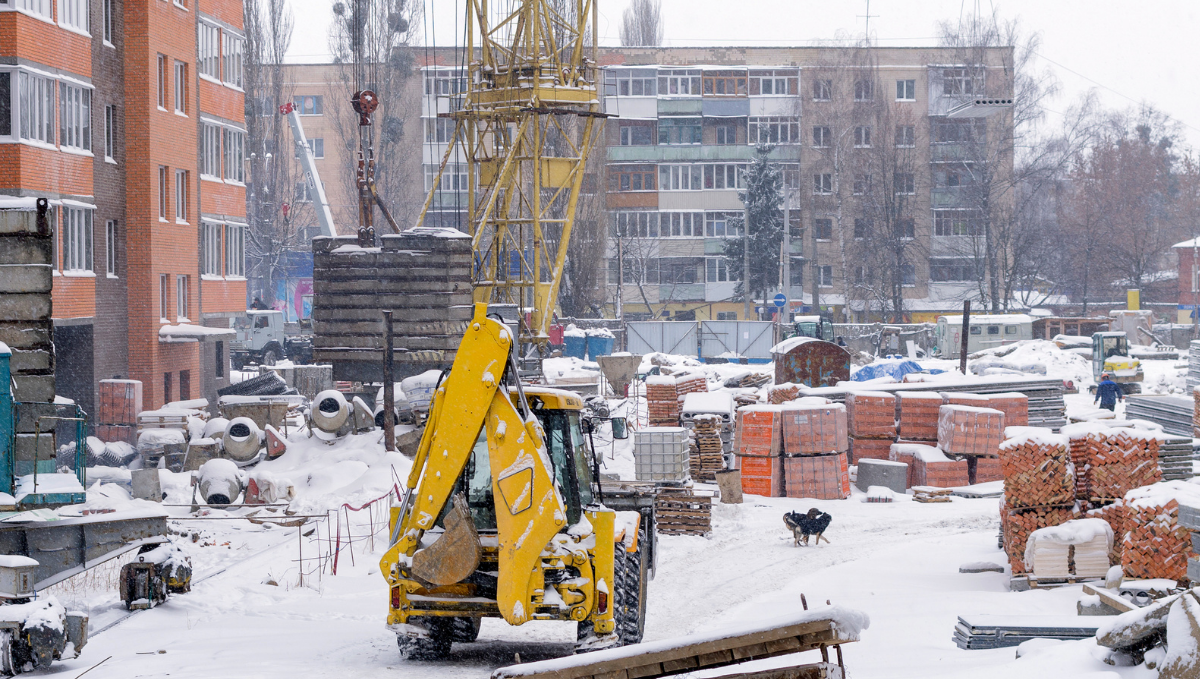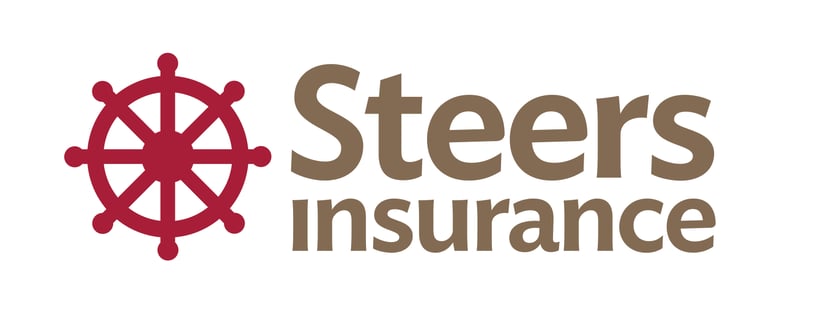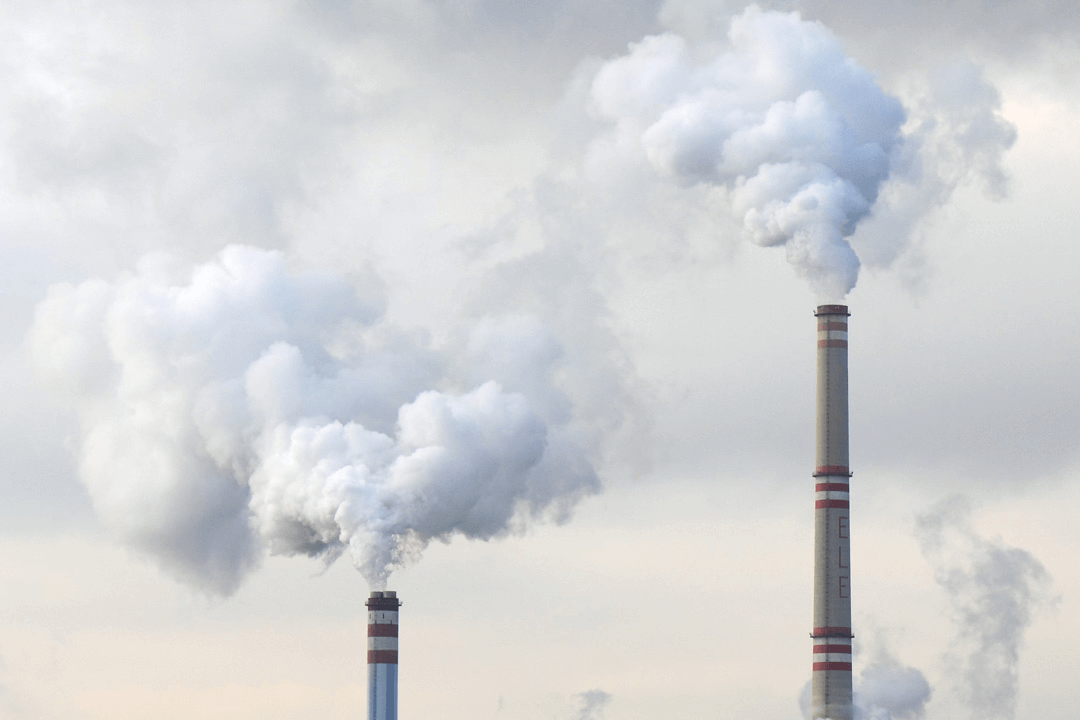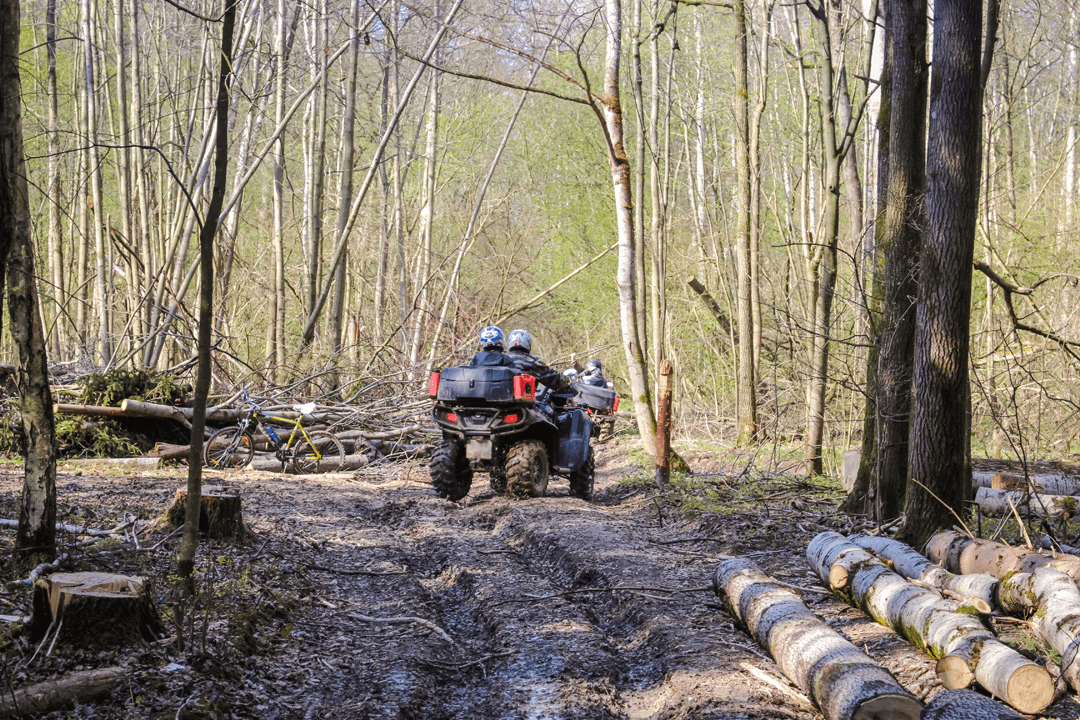 When the temperatures dip below zero, the construction industry needs to ensure safe sites and do its best to avoid slips, frozen fingers, damaged equipment and more. The best way to avoid hazards and prevent accidents during the winter includes:
When the temperatures dip below zero, the construction industry needs to ensure safe sites and do its best to avoid slips, frozen fingers, damaged equipment and more. The best way to avoid hazards and prevent accidents during the winter includes:
Regular checks and inspections
Every time of year, construction sites should ensure their roadways and parking areas are well maintained. This means they are free of potholes and uneven surfaces. Once the ground is frozen access maintenance becomes much more difficult, meaning any holes, excavations or ditching that can't be filled should be delineated using barricades and need to be clearly marked – including after it snows. Construction sites also need to consider problems that only occur during the winter months, including slipping hazards on icy roads, walkways, parkways, and on wooden ramps and scaffolding. Reserves of sand, salt or grit should be readily available and a procedure should be in place on how and when to use these when the time comes.
When it comes to construction equipment make sure to check that your engine and hydraulic oils are filled and replace them if needed. Check that heaters and cabs are working properly and make sure to regularly clear off ice and snow from windscreens and steps. You will also want to make sure you drain fluid from air compressor tanks after each use to prevent moisture that has accumulated from freezing and damaging the tank. You also want to put anti-freeze tool oil in your pneumatic tools and air hoses to protect against the cold.
Removing snow and ice
While shovelling snow might seem like a regular winter activity everyone does, it can be extremely strenuous, especially for individuals who do not regularly participate in cardiovascular activity. Cold temperatures can constrict arteries which increases blood pressure and the chance of a heart attack. If you have a worker at risk of a heart attack, they shouldn't manually snow shovel.
Consider hiring a service to maintain snow removal and to keep your employees safe. One thing to note is that snow removal equipment creates extremely slippery services after the snow has been removed, so make sure you have salt, sand or grit that can be distributed after the equipment has completed snow removal. If you use a de-icer make sure site environmental requirements are met, as some sites prohibit the use of de-icers that are salt-based as they can change the PH and conductivity of groundwater.
Preventing slips on ice
Even in the summer slips and falls are one of the most common construction site accidents. Winter weather increases this risk especially due to ice. When the weather becomes cold, ice can accumulate not only on roadways and parkways but it can also accumulate but scaffolding, ladders, stairs and work platforms. Make sure these materials are built from weather-resistant materials or are cordoned off as they can cause workers to slip and fall. If a worker falls at height, injuries can include broken bones, fractures, traumatic brain injuries, and even death. Fall prevention is essential when protecting against slips and trips so keeping roads, handrails and walkways free of snow and ice is vital.
Minimizing exposure to freezing temperatures
Freezing temperatures can cause skin and internal body temperatures to drastically drop causing frostbite, chilblains and even hypothermia. All of this could cause serious illnesses resulting in permanent tissue damage or in more serious cases, death. If the temperatures are extreme see if the work can be rescheduled, consider warming up areas for workers and make hot drinks accessible during breaks. You should also consider running shorter shifts to reduce exposure time and physical strain.
Provide appropriate Personal Protection Equipment (PPE)
While PPE is recommended on many jobs it's important to balance protection against cold weather and the hazards of the job while still allowing mobility and dexterity to complete tasks safely. Choose PPE that is created for the task or conditions at hand. PPE is considered insufficient if it blocks vision, prevents hearing, fogs eyewear, decreases dexterity, creates lack of mobility, and creates inadequate traction for the current ground conditions.
In addition to waterproof and warm gloves, insulated boots are just as important to keep workers warm and dry while on the job. The added layers of protection for construction workers not only help reduce accidents and injury due to slipping and falling they can also help keep your workers warm healthy and safe all year long.
Unfortunately, even the best-run business runs the risk of an accident occurring, particularly when Mother Nature is involved. That is why it’s also important to ensure your corporate liability coverage is sufficient to deal with any claims or awards that arise from on-site accidents. OTC Insurance Brokers offers a free insurance assessment to help determine if you have the best coverage at the best price. To learn more, get in touch with us today.
Source


 ;
;
 ;
;
 ;
;
 ;
;
 ;
;
 ;
;
 ;
;


